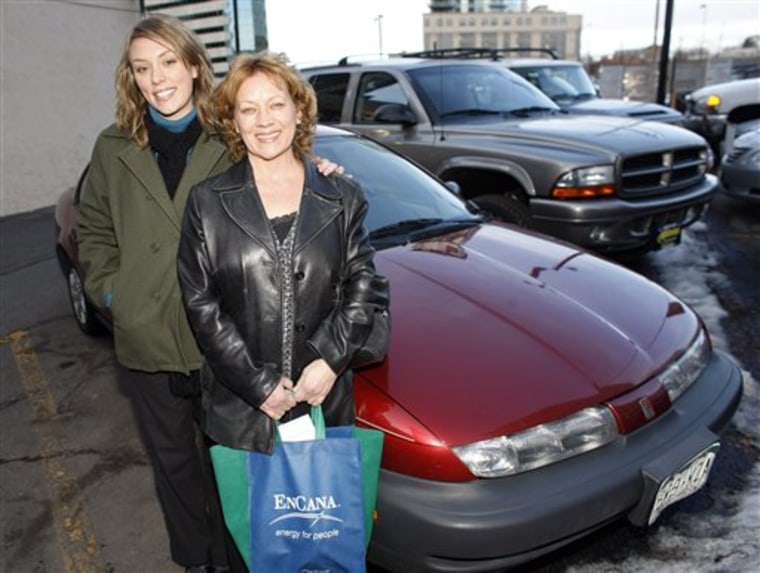Brittany Lyons and her mother, Sherie Lyons, do their bit to cut pollution by carpooling — and this past year they went even further.
The two participated in a first-of-its-kind experiment to gauge whether motorists can reduce emissions simply by adjusting their driving styles.
Last year, the mother and daughter volunteered for the pilot program "Driving Change," thought to be the first Internet-based system to track greenhouse gases spewed by vehicles.
So far, results from tracking 160 Denver city vehicles and 240 private vehicles show that lightly tapping brakes, reducing rapid accelerations and not letting cars idle show an overall emissions decrease of 10 percent.
"I would say it's very encouraging," Denver Mayor John Hickenlooper said.
Denver, which started testing its vehicles last March, will compile a year's worth of data and review the results before deciding whether to hook up more of its fleet.
Idling cut by a third
Participants could check their results online. That seemed to have a great impact on engine idling: From May through November, idling decreased by more than 35 percent among participating vehicles.
"The gasoline savings amounts to hundreds of thousands of dollars per year for a fleet of 2,000 vehicles, confirming that what's good for the planet is also good for the bottom line," according to Enviance Inc., the company providing the Internet-based software for analyzing driving.
Changing driving habits promises to avoid more than pollution. Hickenlooper said insurance underwriters confirm that drivers who slam the brakes and punch the gas have more accidents.
The city teamed up with San Diego-based Enviance, and Cartasite Inc., which provided the telemetry technology to transmit data from the vehicles over the Internet. EnCana Oil & Gas (USA) financed the project.
Sherie Lyons and her daughter work at the EnCana office in Denver. They were among 30 employees from the company who volunteered to have their driving monitored.
Coffee tip
Brittany Lyons, who picks up her mother for the 11-mile commute from the suburbs, admitted to being "an idler" before taking part in the program.
"I would leave my car running when I went in" to her mother's house, Brittany Lyons said.
"That stopped," said Sherie Lyons, making a slashing motion with her hand.
The only visible evidence that the car was different from others in a downtown parking lot was the measuring device — a black oval with a cord on the bottom of the driver's side windshield. The data is transmitted via a cellular telephone network.
Brittany Lyons said she used a tip from Enviance to ease up on starts and stops. "They said to drive like you have an open cup of coffee in the car," she said.
